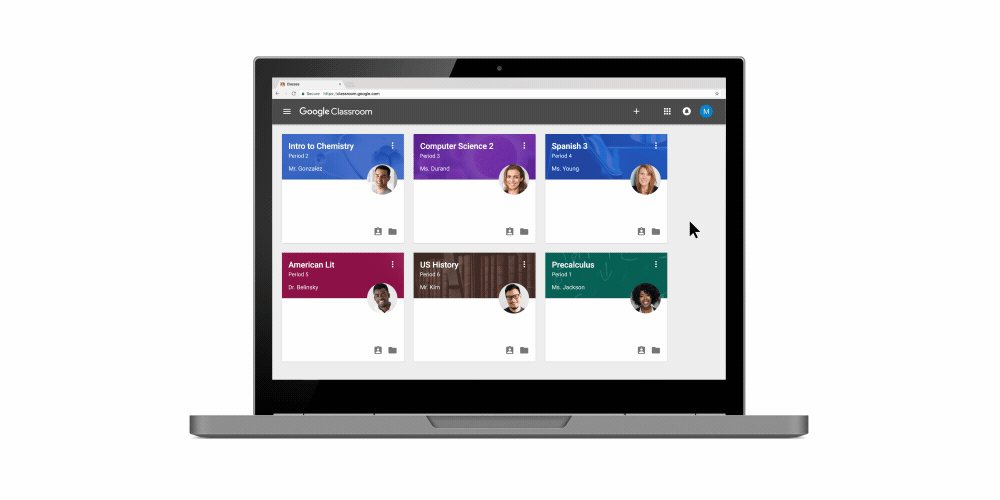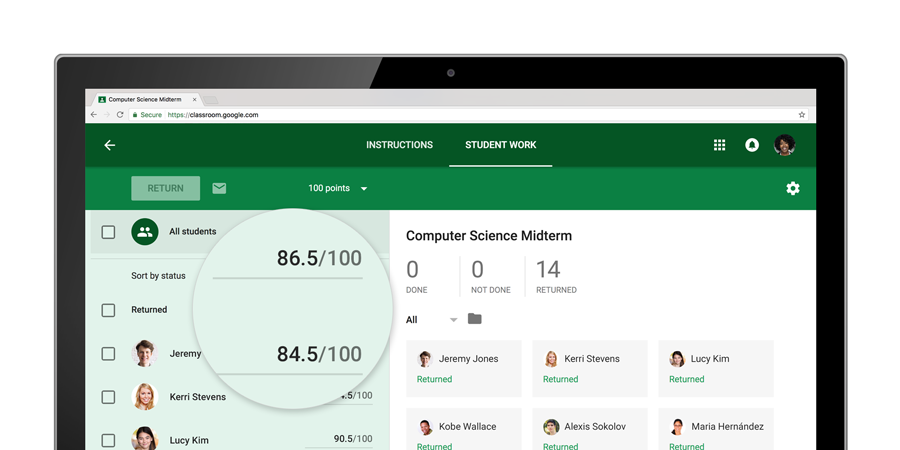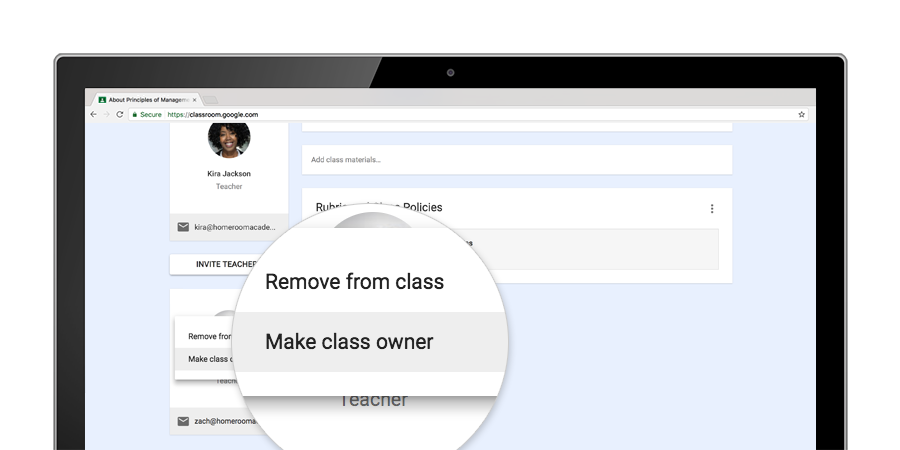[Editor’s note: This piece is the first in our new monthly series focusing on Innovative School Libraries and Librarians. Be sure to keep checking back during the month of August for new library-focused articles!]
The Barrow Peace Prize is a cross-curricular project that allows 2nd-grade students to consider the character traits of peace and extend their voices to a global audience.
Named for our school, David C. Barrow Elementary, the project begins with each student selecting one of six nominees from civil rights history to research. They then create a persuasive video essay as well as a watercolor painting showing why their chosen nominee best displays the qualities of peace. The videos are voted on by people from all over the world, and the nominee with the most votes (and the students who researched them) is awarded the Barrow Peace Prize.
This project comes after students have studied Jimmy Carter and Martin Luther King Jr., and gives them an opportunity to explore additional historical figures beyond what is specifically listed in our standards. Each year, I begin by sharing Alfred Nobel: The Man Behind the Peace Prize by Kathy-Jo Warginalong with information on the Nobel Peace Prize. I also read Peace Is an Offering by Annette Lebox. Each classroom brainstorms a list of traits that someone would need to exhibit in order to be worthy of the prize.
Teaching Basic Technological Skills
Every year when we start this project, I’m overwhelmed by just how many technical skills are woven in.
Our students mostly use iPads in kindergarten and 1st grade, so this is their first use of a laptop for a project. We share a Google Doc graphic organizer in Google Classroom, so students must learn how to log in to their Google account, access Google Classroom, and open their document. They also must learn to navigate multiple tabs online, since they will have Google Classroom, PebbleGo, and their Google doc all open at the same time.
I show students how to copy and paste from digital resources, cite sources, and put information into their own words. I also show them how to use Google Explore to search for public domain images to use for their art project. Students have some familiarity with Flipgrid by 2nd grade, but sometimes they do need support to navigate typing in their code and recording their videos.
Two students are selected to design the peace prize in 3D, and I show them how to use Tinkercad and sit with them while they design to offer troubleshooting tips.
Even though it can be a challenge to use all of these new skills with young learners, they prove again and again that they can do it. If they start using these tools now, it will only strengthen the kind of work we can do together in later grades, when they have their own device.
One of the databases our students use for research is PebbleGo. Designed for students in the younger grades, it offers a quality base of facts about a variety of topics, which are broken down into manageable sections under each heading. We use many of the headings to craft our graphic organizer questions so that students are able to navigate the information related to the question.
(Next page: Embracing all students; a global audience; strengthening the community)
Embracing the Talents of Every Student
The cross-curricular nature of the Barrow Peace Prize gives students opportunities to shine in different areas.
Some students design amazing pieces of art to represent their nominee. Other students are detail-oriented, so they shine by sharing the many facts they have found. Some students have a gift for persuasive writing, so their talents come through as they write convincing reasons for people to vote. Other students are great speakers, so they show their personality through their videos.
Every single student is engaged in the project in some way.
I think students surprise themselves during this project. For example, I’ve seen students who have said, “I’m not a great artist,” and then they suddenly create a beautiful watercolor image that they had no idea was hiding inside them. Other students are more introverted and don’t like sharing in front of the whole class, but by using a tool like Flipgrid, students are able to speak to just the iPad. This allows their voice to be heard in a way that it might not be heard in the classroom. I also think students surprise themselves by the amount of work that they put into the project across several weeks. Many times, students finish an assignment within a class or a few days.
The Barrow Peace Prize pushes them to persevere through a long project.
Speaking to a Global Audience
Alan November says, “An audience of one, the teacher, is no longer sufficient in preparing students for success in a global economy.”
From day one of the project, we talk about audience. We look at past projects and show students how their work would be viewed by people all over the world. This year, I showed them pictures of classes in Weatherford, Texas; and Seattle, Washington, viewing student work from last year.
In the library, students used Flipgrid to record a video where they read their persuasive essay and displayed their watercolor image. As each student recorded, their video uploaded to a grid with all of the other 2nd-grade students researching that same person. After recording, I made a Smore page with links to all six Flipgrids featuring student voices. I embedded a Google form so that anyone could vote on who they thought should win the Barrow Peace Prize. I shared the link on multiple forms of social media, with our families via email and newsletters, and with the students and teachers in our school. The 2nd grade also presented the project at our schoolwide assembly and asked other students to vote.
This year’s project Smore was viewed in more than 150 locations around the world. The students accumulated more than 3,000 views of their videos, hundreds of likes, and hundreds of votes. Every student had a voice in the project, no matter if they were in general education, special education, gifted, English as a second language, or early-intervention programs.
One of the biggest benefits that I’ve seen through this project is student motivation. I think back to other traditional assignments where students repeatedly said, “I’m done,” or “How long does this have to be?” or “Do I have to do this?” With this project, those comments pretty much disappeared. Students are motivated when they know their work has a genuine audience. They see the maps of visitors to the projects, the number of views, and the number of likes that previous 2nd-grade classes have received, and they know that their work must be their absolute best. They suddenly feel a sense of pride and fame before they’ve even started the project.
We saw students who would normally write minimal amounts during writing time suddenly writing full persuasive pieces—because they knew people would listen. Students respond to knowing that their voice matters in the world.
As the project comes to a close, we connect with the developers of PebbleGo and Flipgrid to celebrate our work. Both companies talk to students via Skype about how their voices make an impact in the work. They also stress how much they learn from students about the effectiveness of their products and how they support student voice in schools.
Strengthening the School Community
When we announce the winner of the peace prize, students know that their collective voices from across the whole 2nd grade came together to make that person win. It wasn’t one student’s voice alone.
At the end of the project, we celebrate various students with awards for their speaking, writing, research, and art. Every time we award one of these individual prizes, the entire grade cheers. It’s at that moment that I can tangibly see how this project strengthens the student community.
Families are also connected to this project, because they get to see their child’s work and share it with extended family around the world. Parents who can’t come to the school for the awards ceremony due to work can still see the project and participate. So often, extended family members miss out on the great work happening in a child’s classroom, but this project allows them to view the work from anywhere in the world and interact with the project through voting and sharing.
The Barrow Peace Prize is one of the projects that I showcase not only when I speak around the country, but also when planning new projects with the teams in my school. It weaves together digital literacy, information literacy, public speaking, reading, writing, art, social studies, character development, student voice, global collaboration, and more. It has a balanced mix of print and digital content, and it brings an entire grade level together to work toward a common goal, rather than being in individual competition.
Because we’ve been so public with this project, other libraries and schools have already started similar projects, so our students are able to see that something they create can have an impact on people around the world. Through projects like this, we can teach our students that their voice matters.













